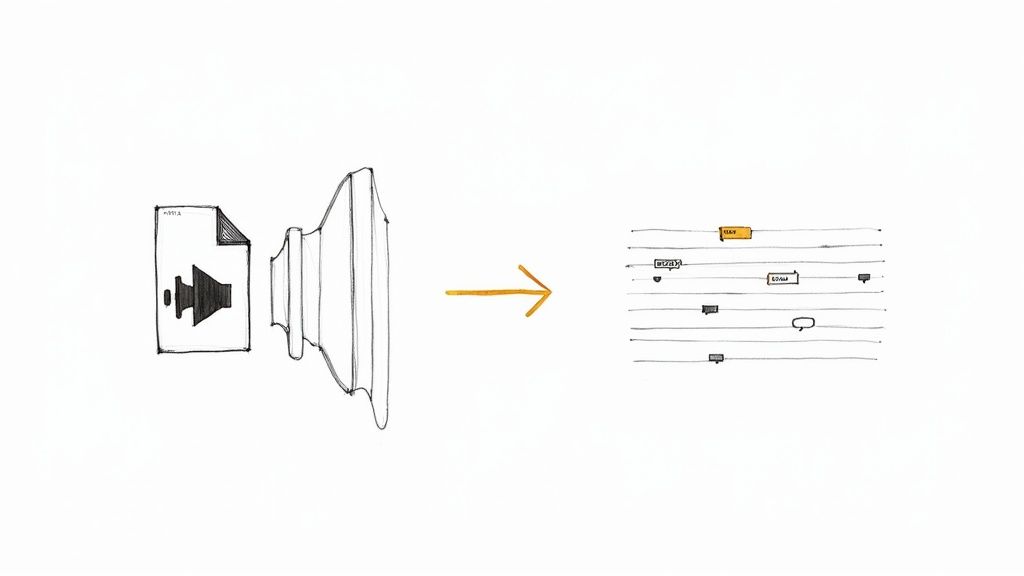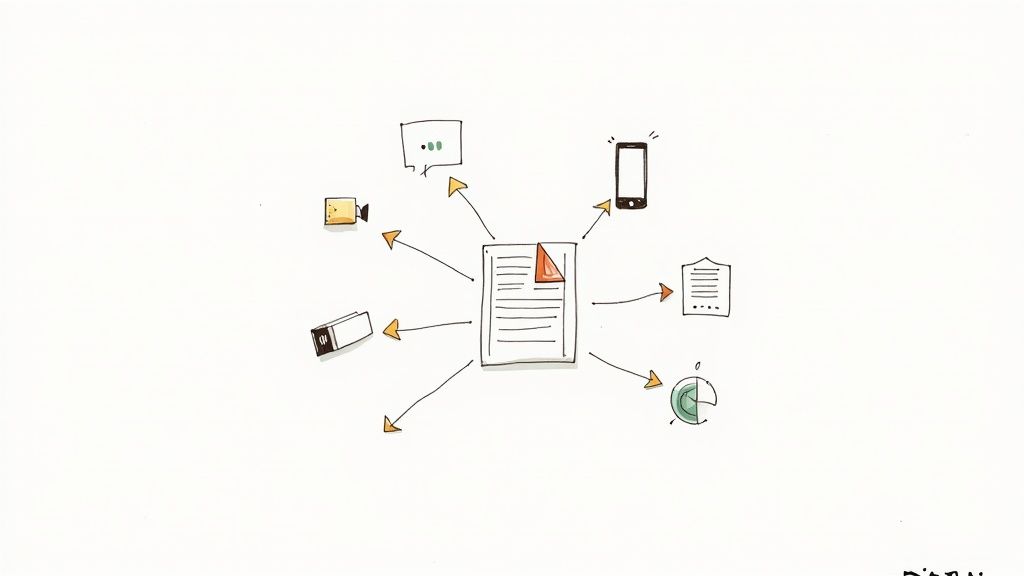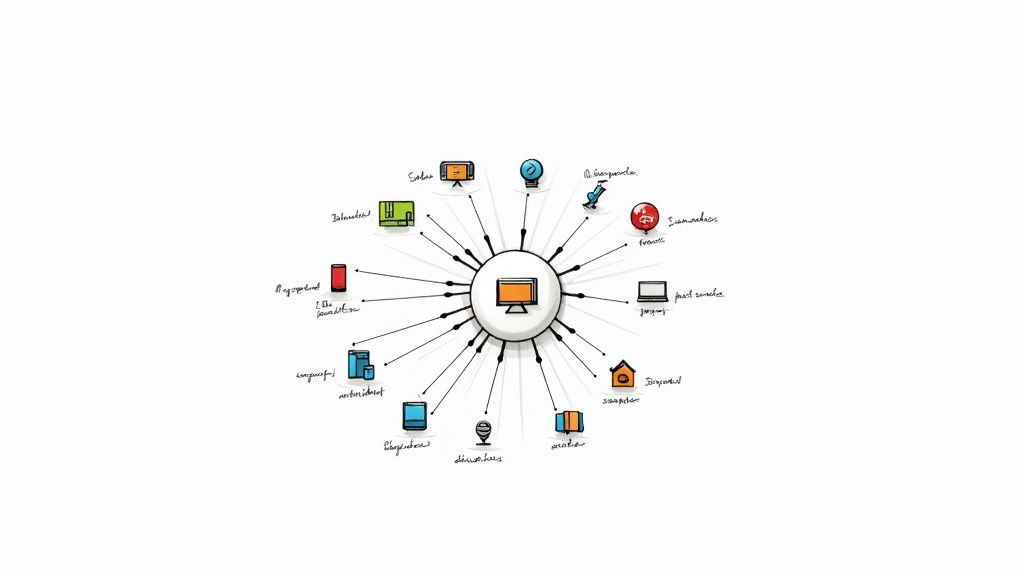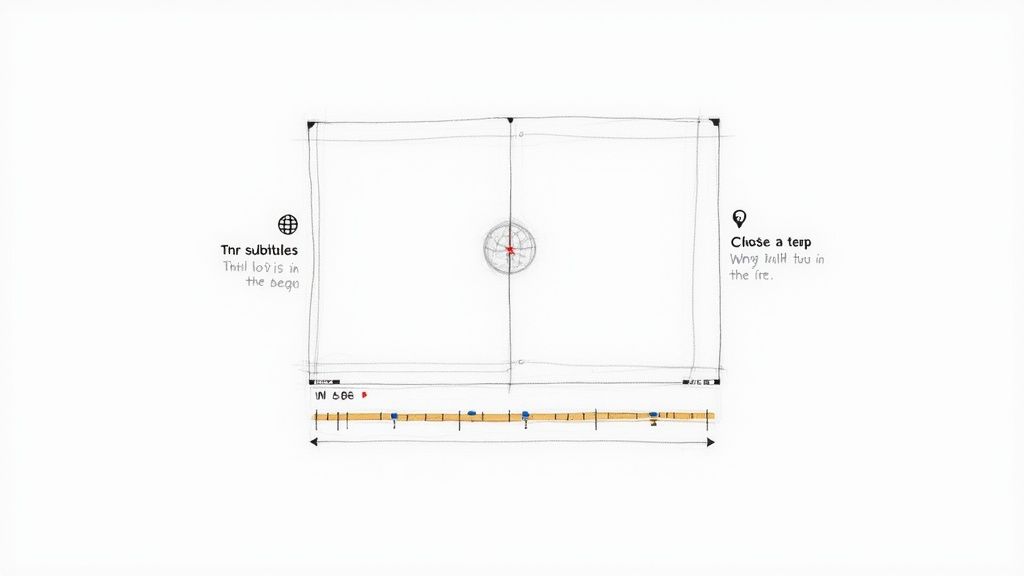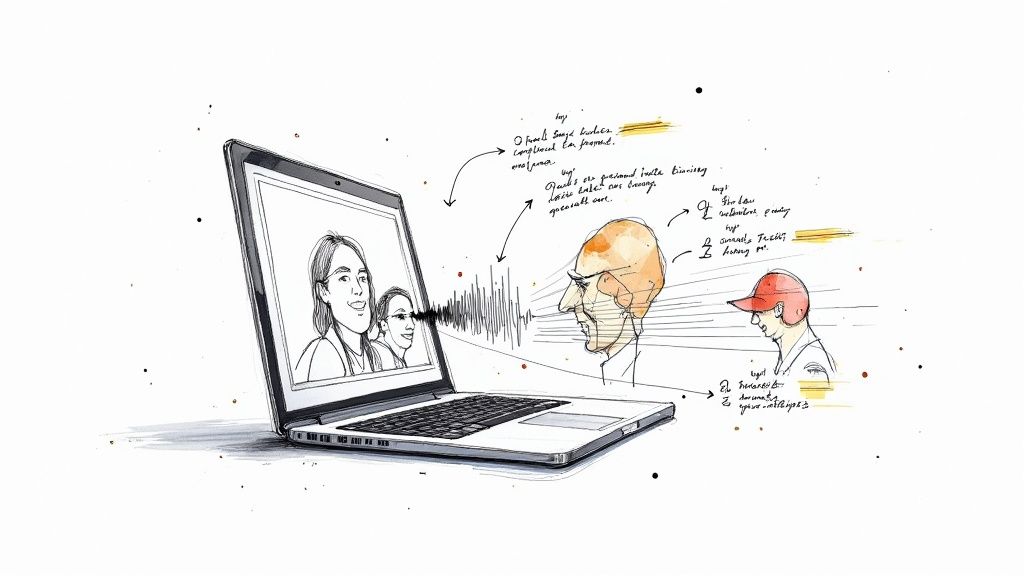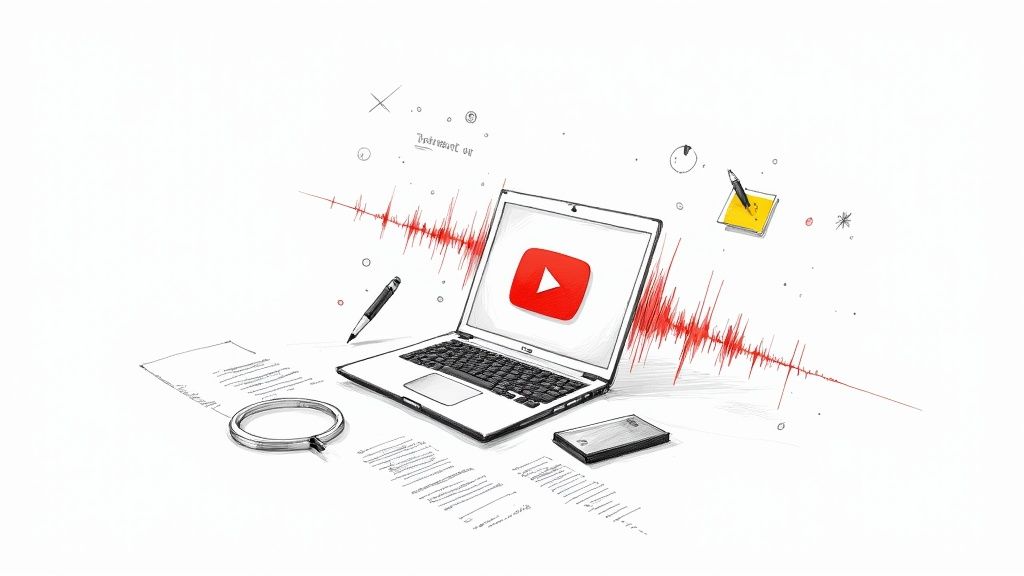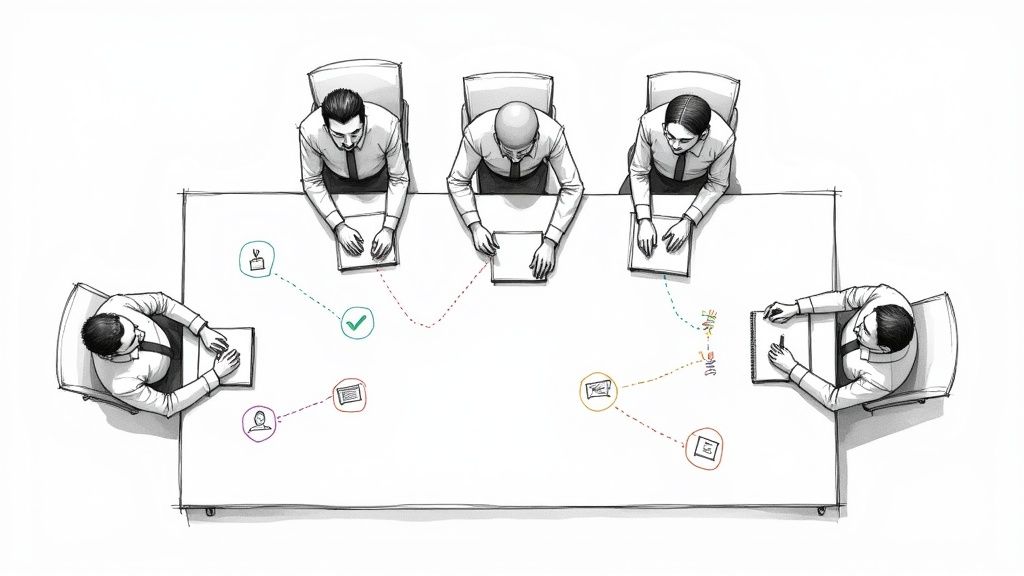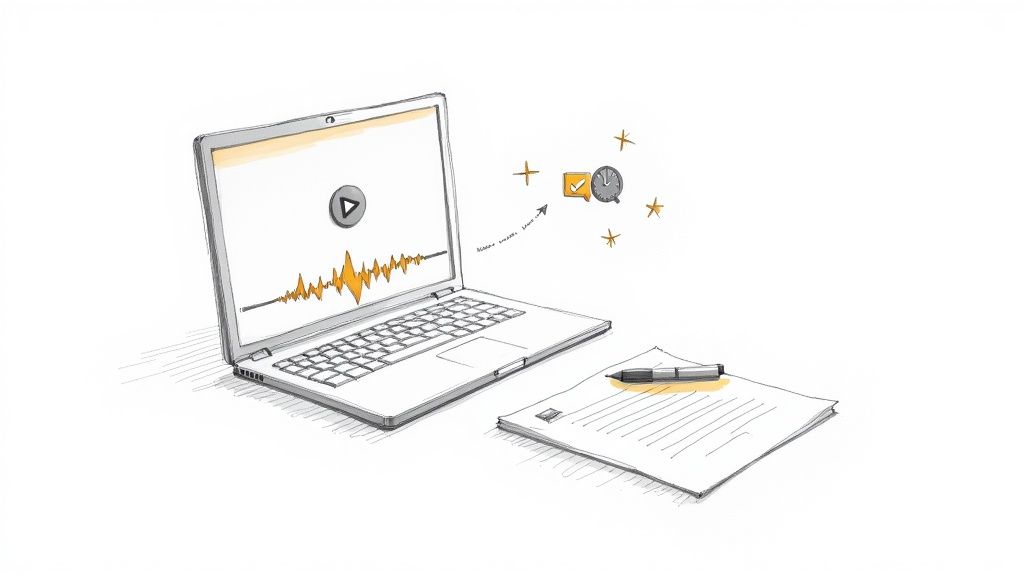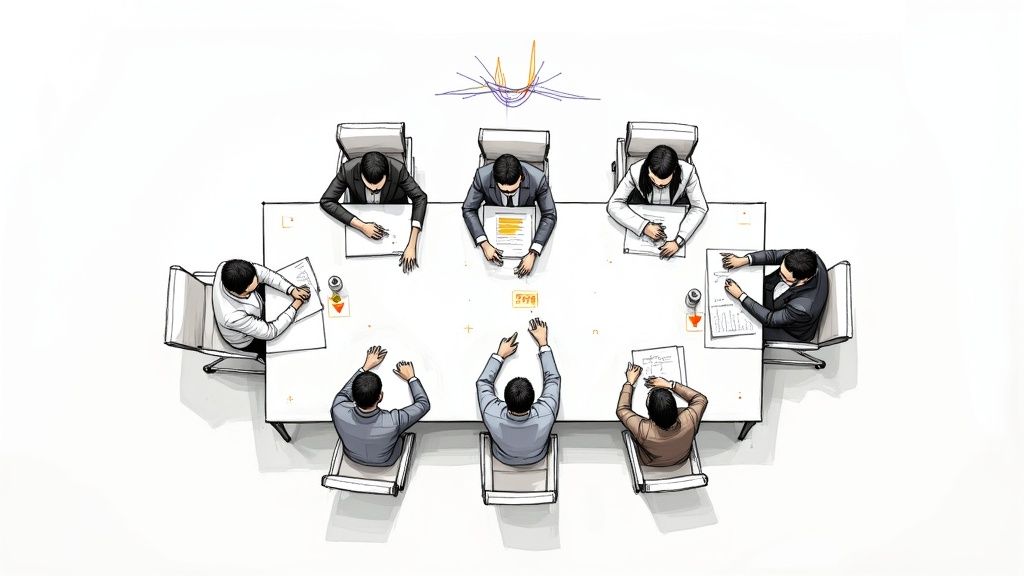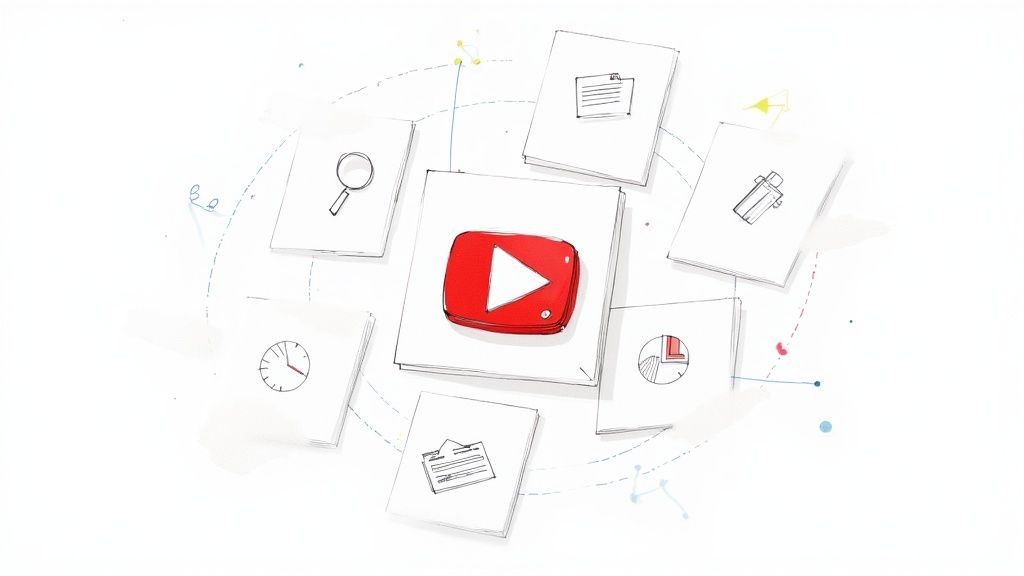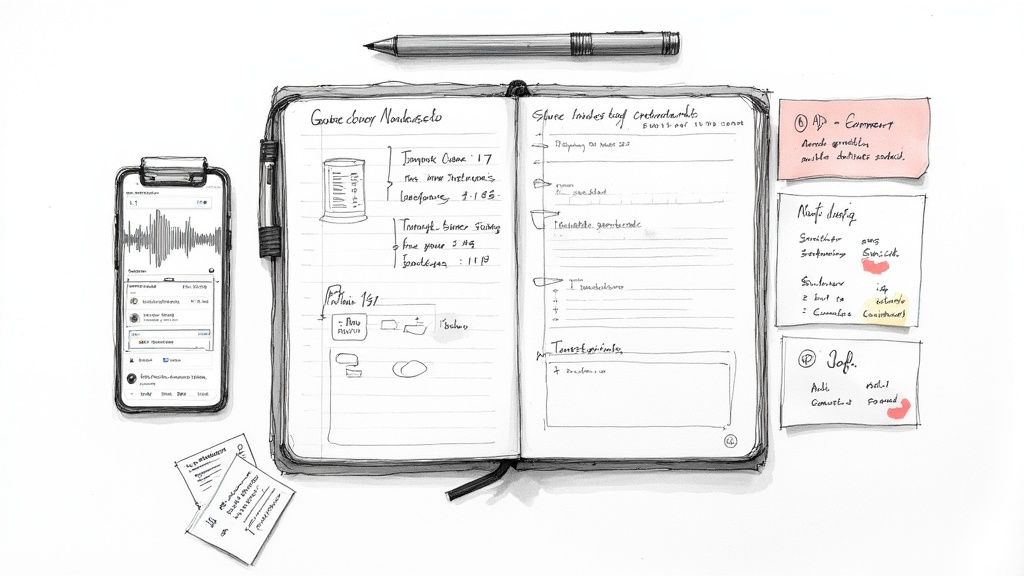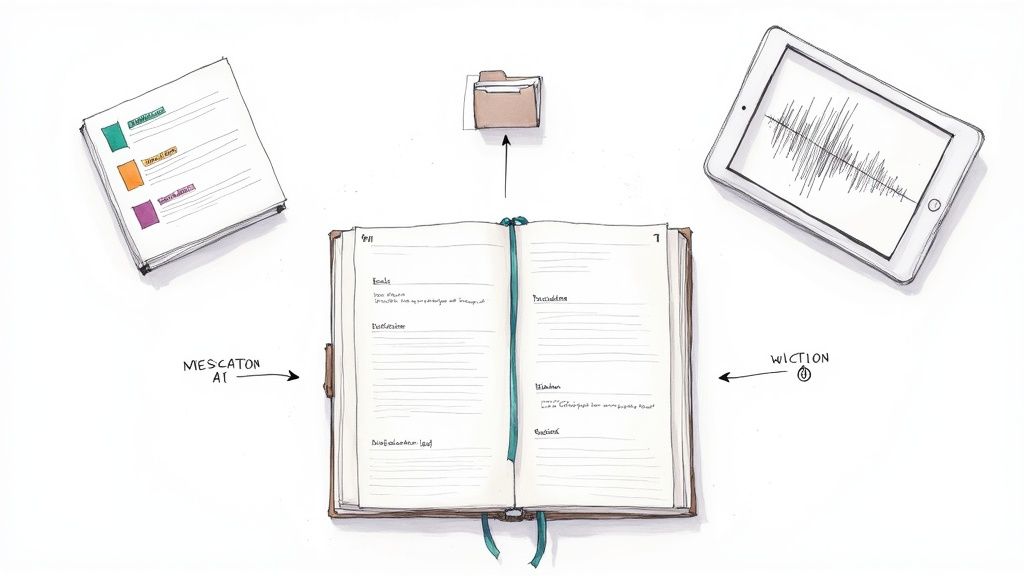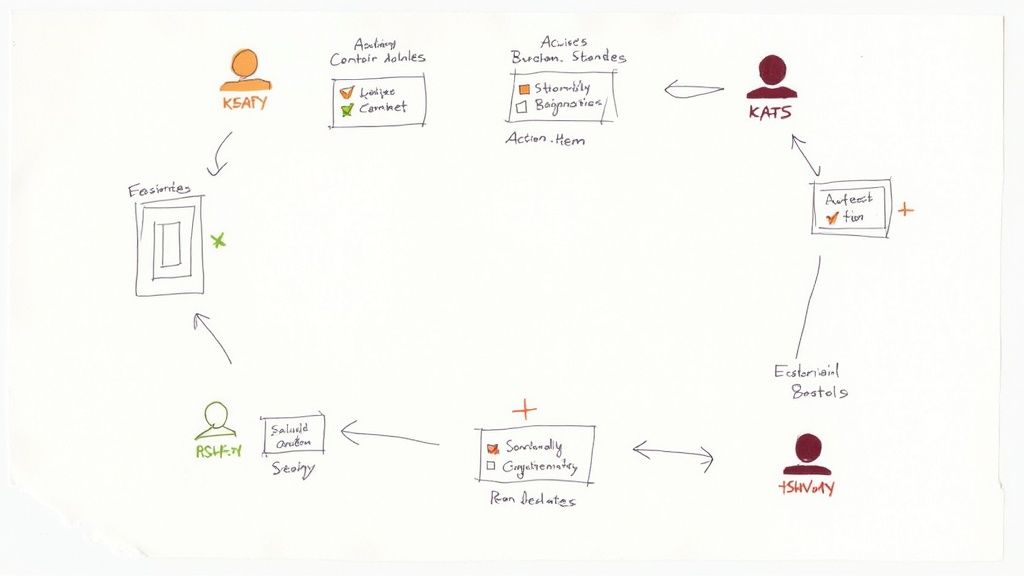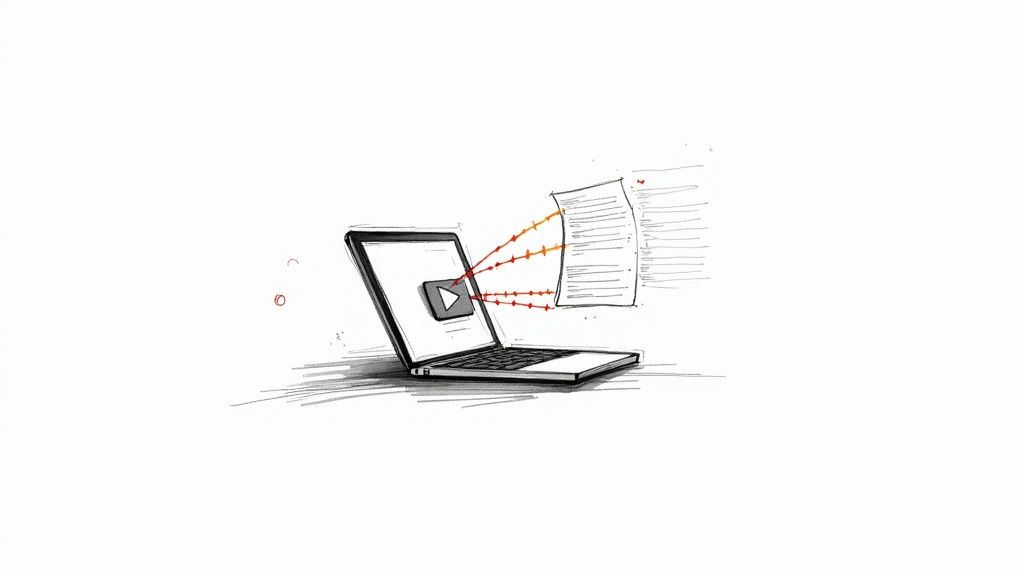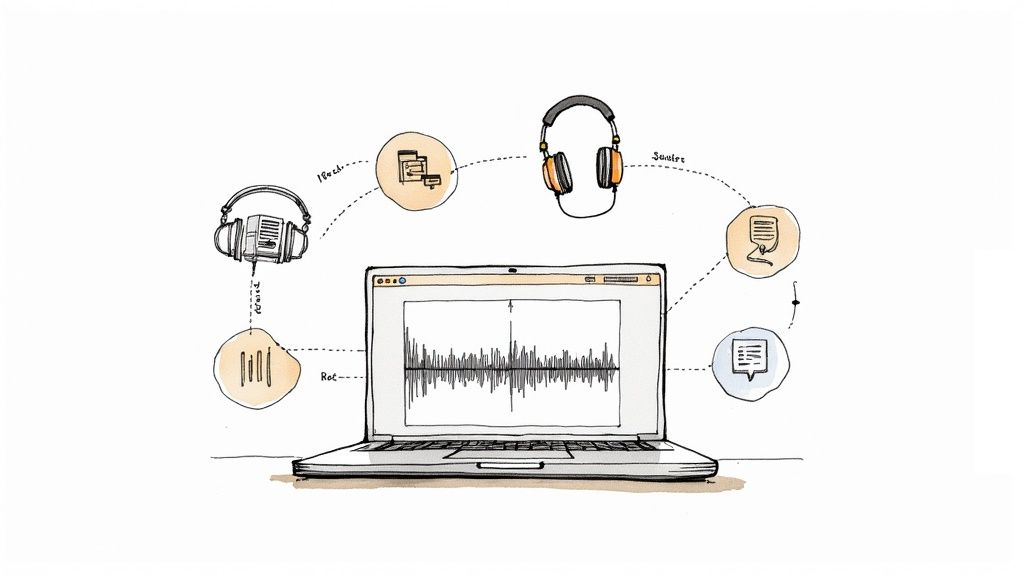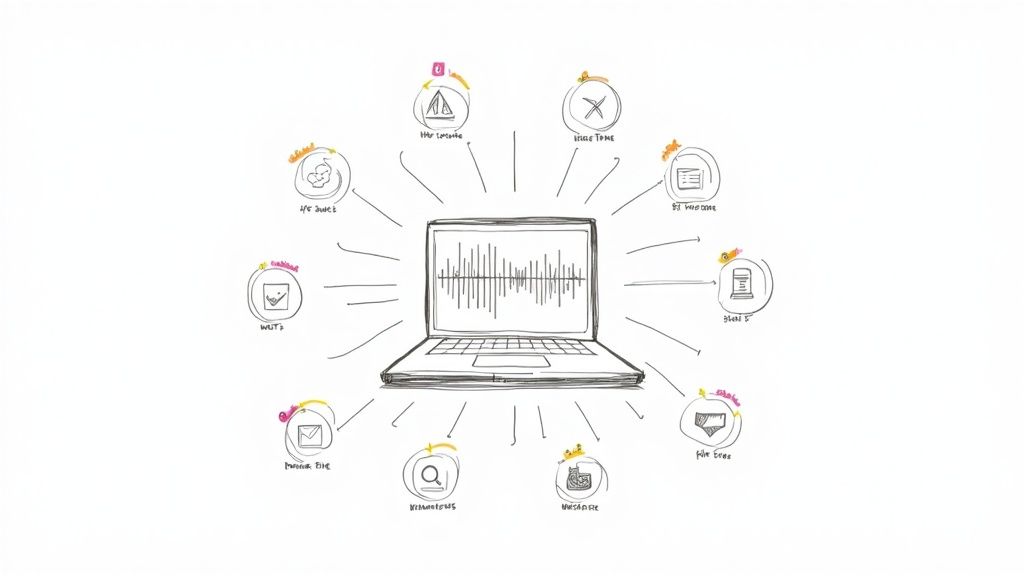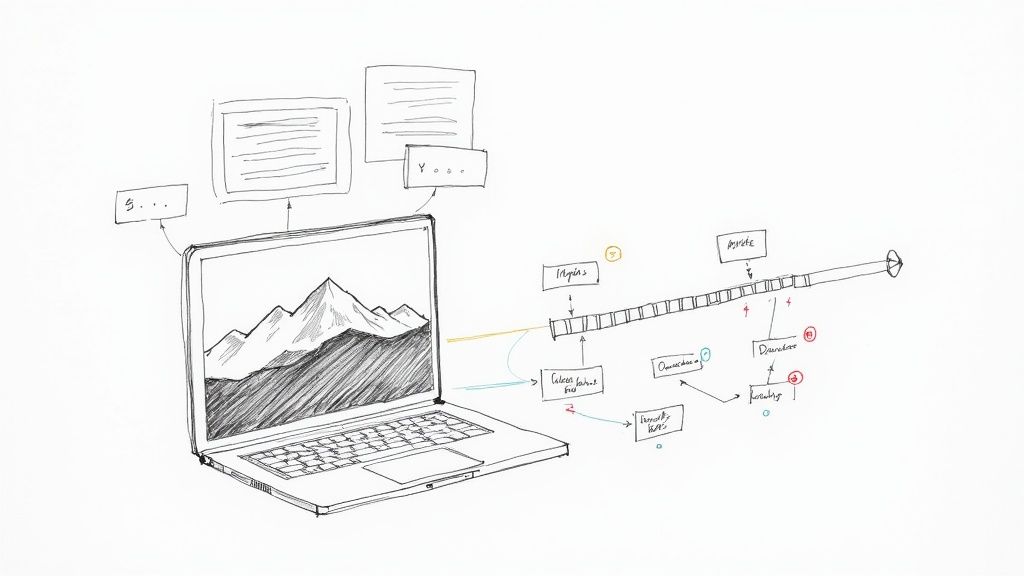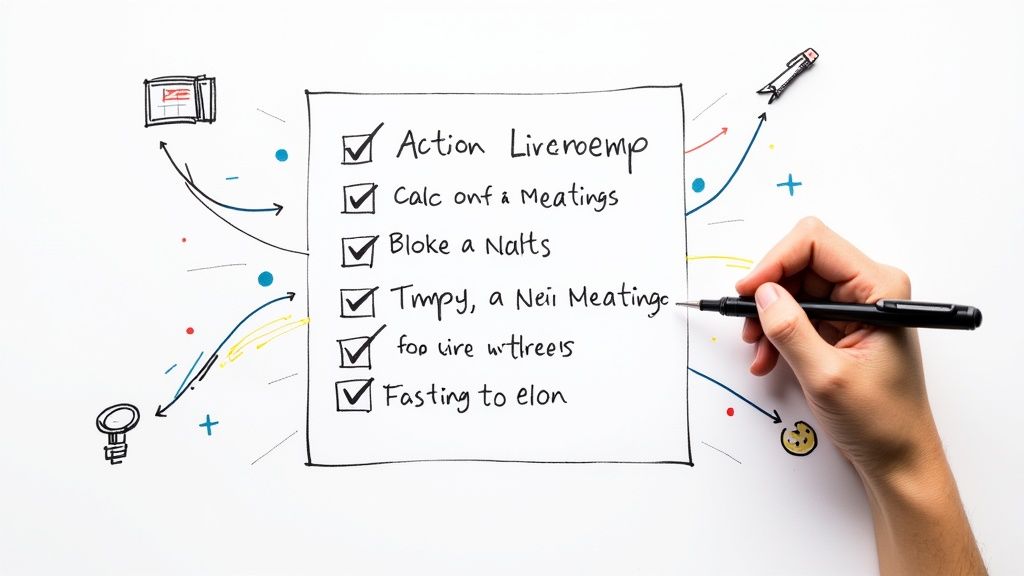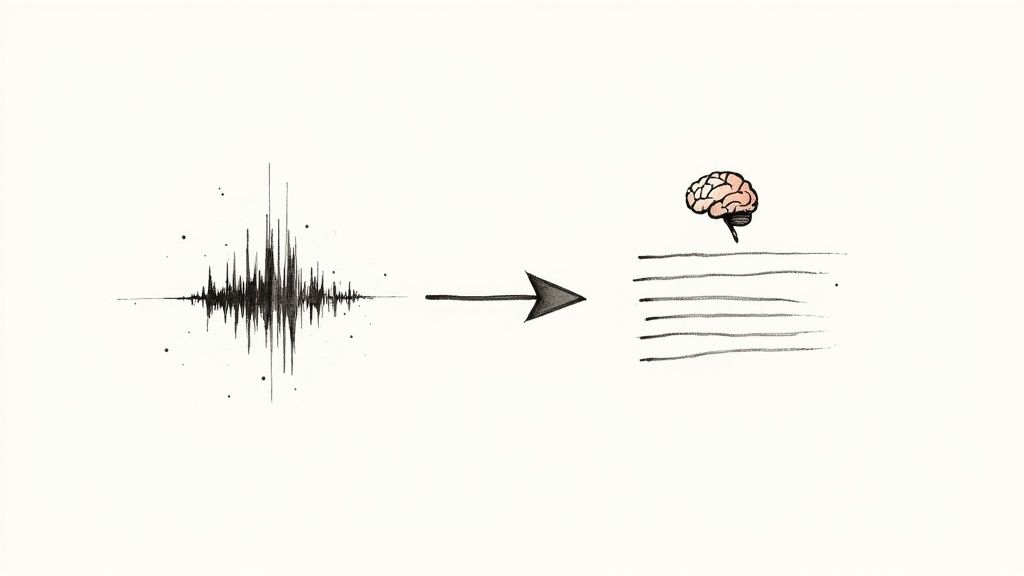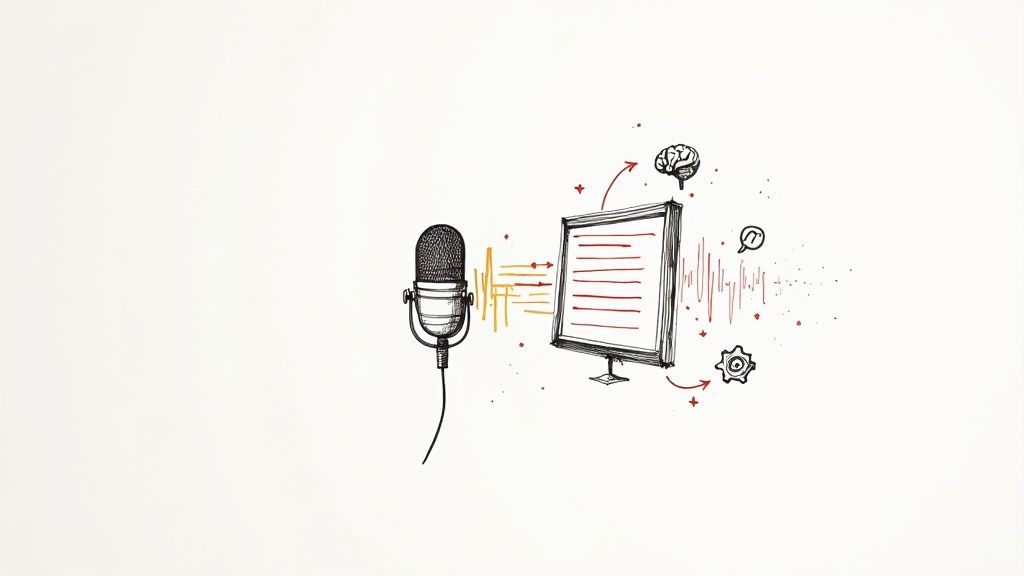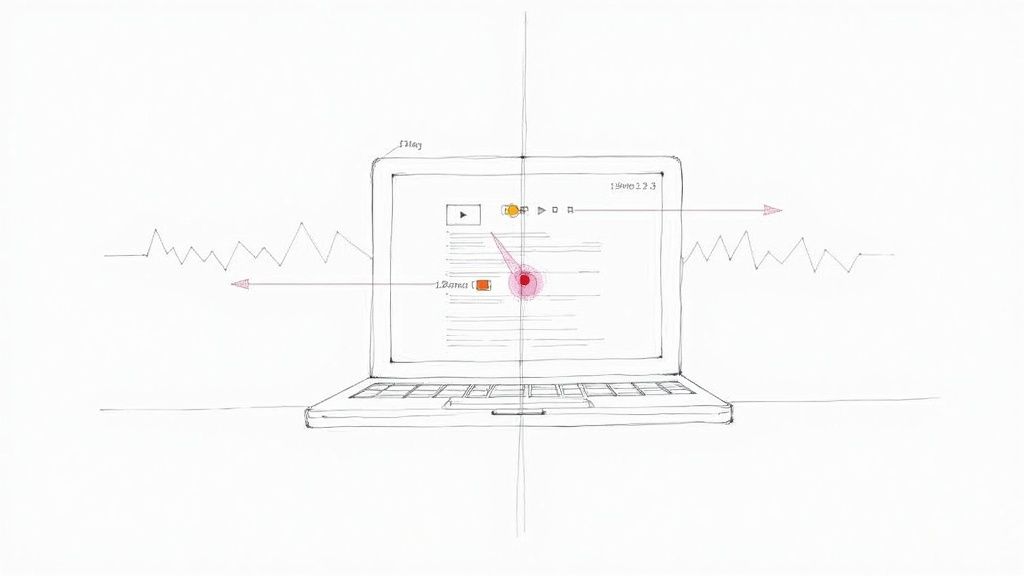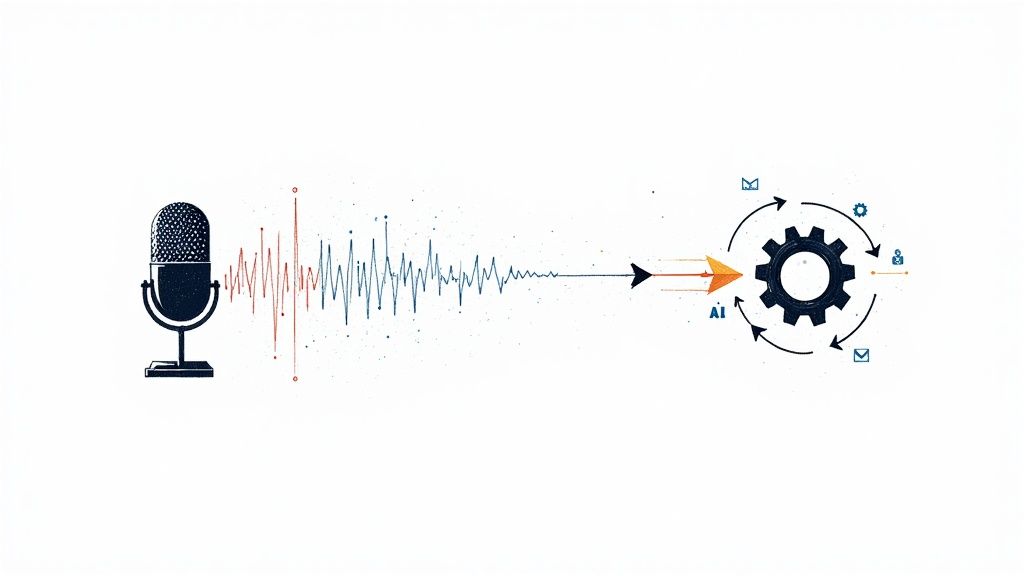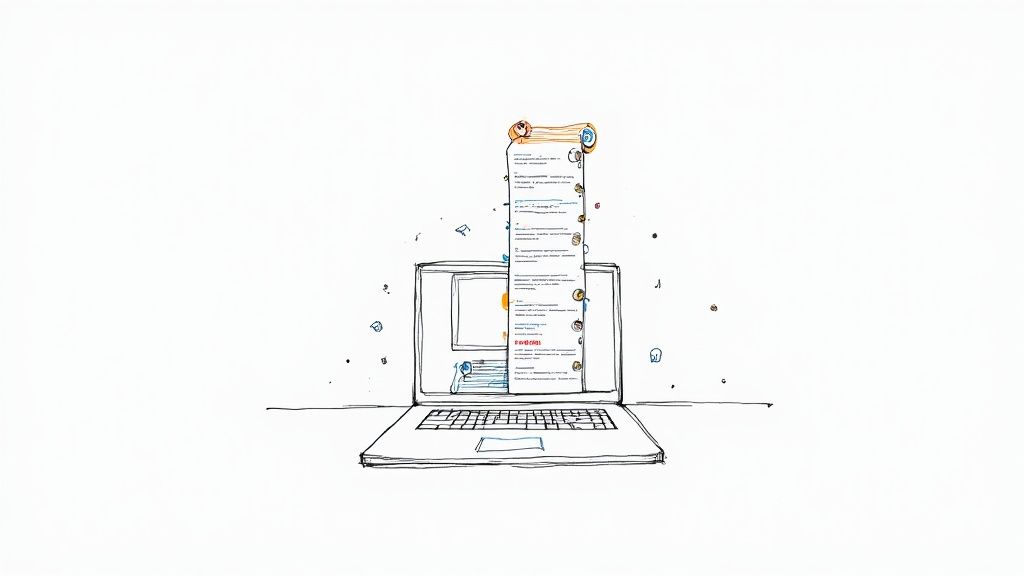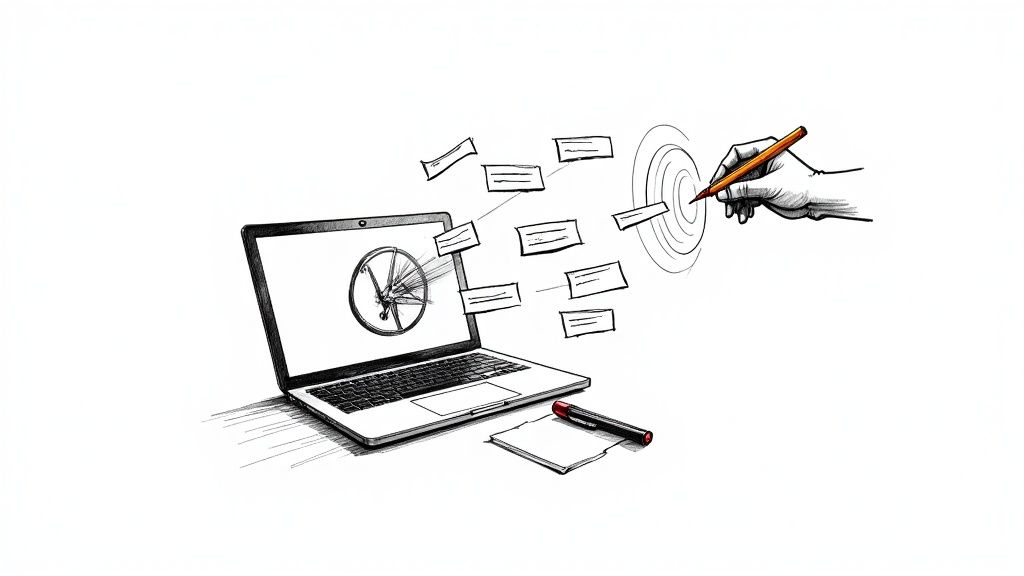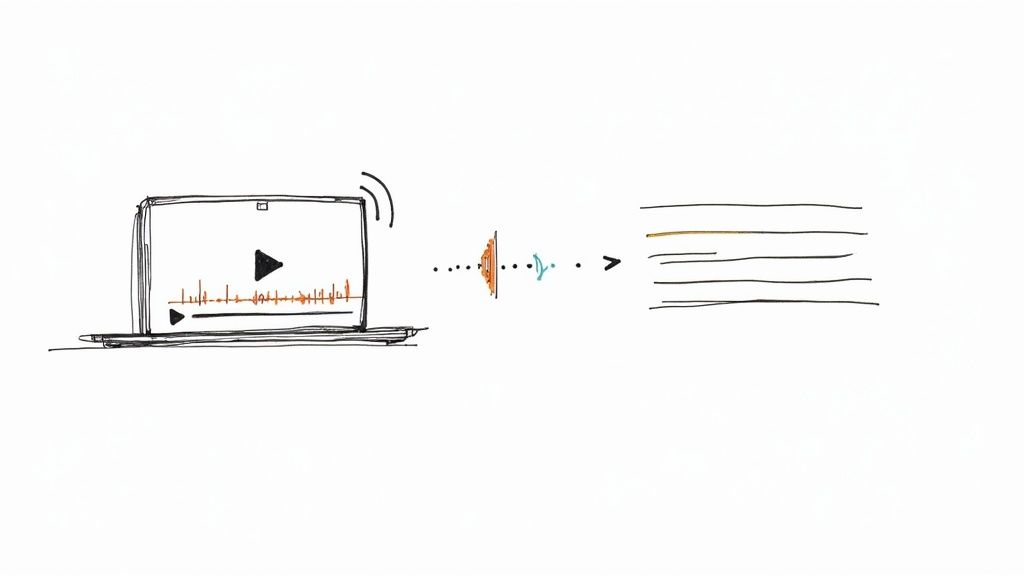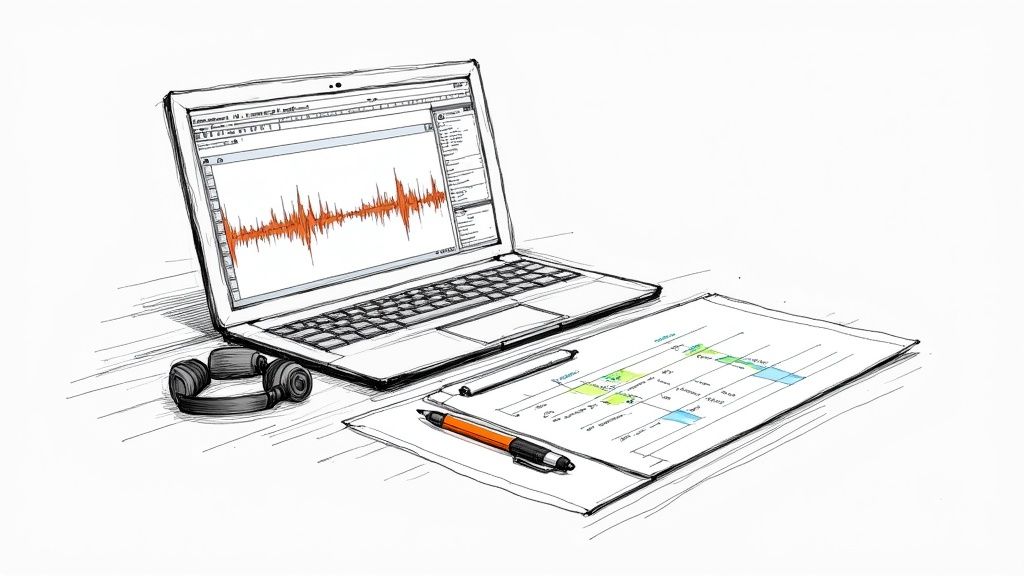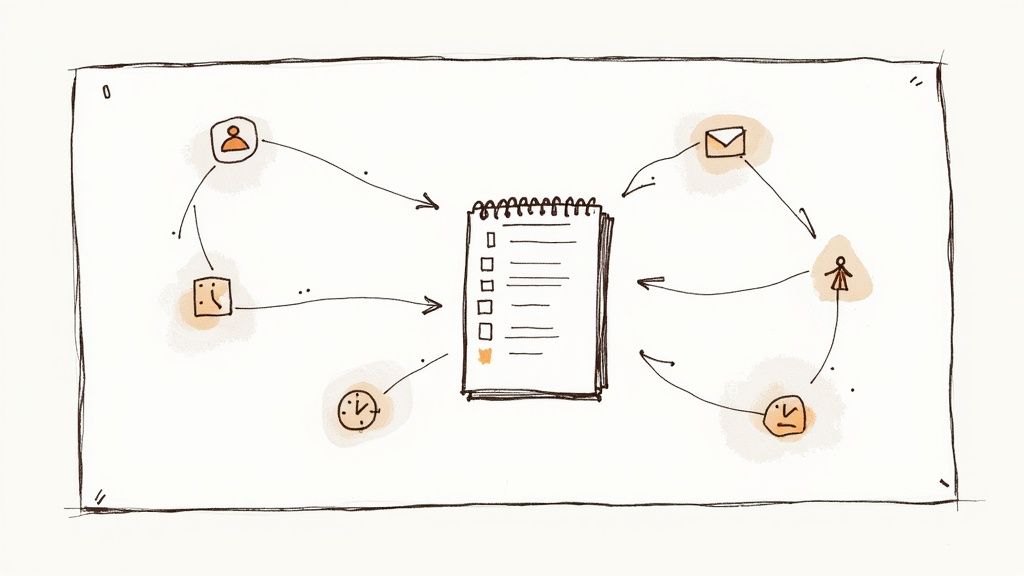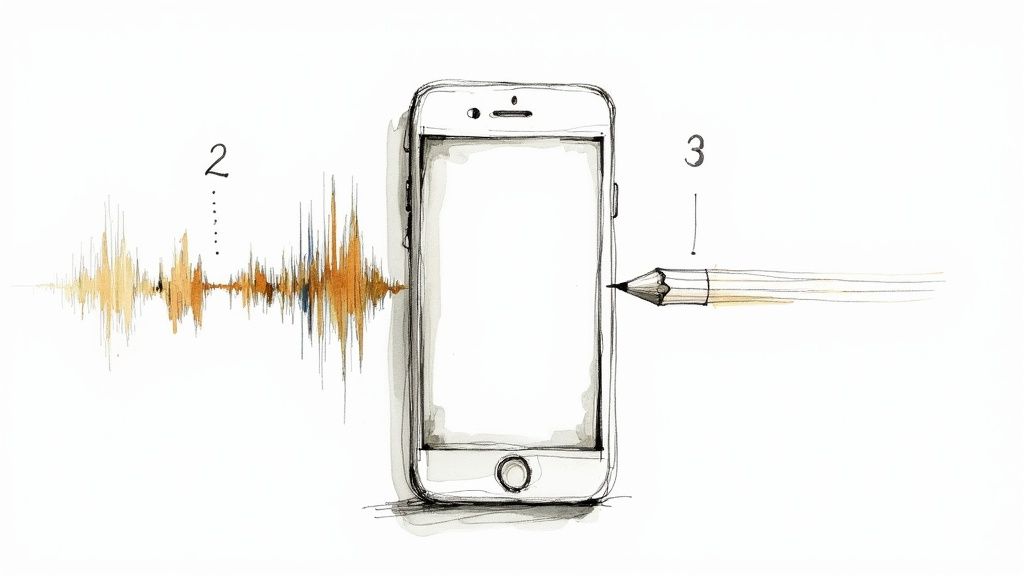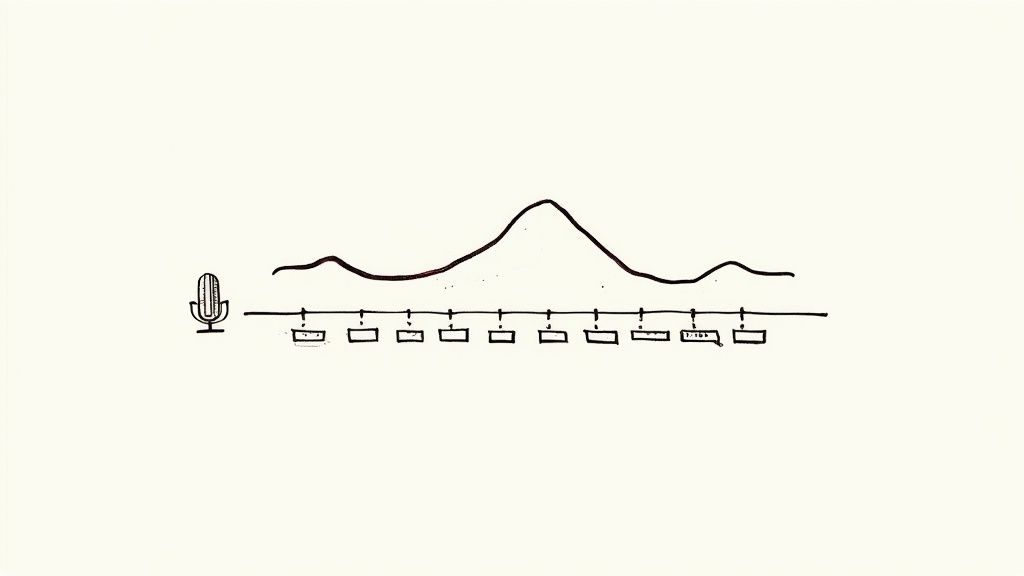
A Practical Guide to Meeting Minutes with Action Items (Sample Included)
Let’s be honest. Most meeting minutes are where good intentions go to die. They're dutifully typed up, filed away, and almost never looked at again. They act as a record of a conversation, sure, but they completely fail to spark any real action.
A truly effective meeting minutes with action items sample isn't just a transcript; it's a roadmap that turns discussion into tangible results. In my experience running countless projects, the quality of the meeting follow-up is the single biggest predictor of a team's success. This guide will walk you through exactly how to create minutes that get things done.
Why Your Meeting Minutes Aren't Working

Think about the last set of minutes you read. Did they inspire action, or did they just end up in a digital graveyard? If it's the latter, you're not alone. The problem is that most notes don't create a solid bridge between the conversation and what needs to happen next. It’s a common issue that brings projects to a halt and lets accountability slip through the cracks.
The root of the problem isn't just sloppy note-taking. It’s a breakdown in capturing actual commitments. A global survey on meeting governance found that less than 50% of organizations are any good at tracking and following up on action points. That's a massive gap where great ideas and important decisions fall flat.
The Ambiguity Trap
One of the biggest culprits I see is vague, fuzzy language. An action item that says, "Look into the Q3 marketing budget," is completely useless. Who owns it? What does "look into" actually involve? What's the deadline? This kind of ambiguity creates a vacuum where tasks are left floating, and everyone just assumes someone else has it covered.
You have to be ruthlessly specific. To get out of this trap, it helps to understand why so many meetings feel unproductive. For some great perspective, check out the transformative insights from 'Death By Meeting'. The key is to shift your focus from simply writing down what was said to documenting what will be done.
The real purpose of meeting minutes is to create a public record of commitments. Without clear ownership and deadlines, your notes are just a transcript of a conversation that led nowhere.
Lack of a Clear System
Another reason minutes fail is the complete absence of a consistent system. When you bury action items inside long, dense paragraphs of text, you’re basically hiding them. It’s a surefire way to make sure they get ignored.
Truly effective minutes make the action items pop. They're visually separated from the general discussion, making them impossible to miss. A good system means anyone can scan the document in 30 seconds and know exactly what’s on their plate. If you need to build a better process from scratch, our guide on taking minutes at meetings is a great place to start.
The Blueprint for Action-Oriented Minutes
Before we get to the sample template, let's talk about what actually makes meeting minutes work. Forget about writing a word-for-word transcript. Your goal is to create a blueprint for accountability—a clear, concise document that tells everyone what was decided and what happens next.
A great set of minutes should bring someone who missed the meeting completely up to speed on the important stuff in just a minute or two.
Capturing What Truly Matters
So, what's the "important stuff"? It really boils down to a few key pieces of information. You absolutely need the basics, of course: the meeting title, the date, and a list of who was there. Getting this down right away prevents any confusion later about who was in the room when a decision was made.
After that, your focus narrows to the three things that actually drive progress: the meeting's objective, the key decisions, and the action items that came out of the discussion. The objective is your "why"—a quick sentence that sets the stage, like, "Finalize the Q4 marketing campaign strategy and budget."
Next up are the big decisions. This isn't the place to rehash the entire debate. Just capture the final outcomes.
I've always found it helpful to write minutes with this goal in mind: a colleague should be able to read them and understand every major outcome in under 60 seconds. If they can't, the minutes are too long and unfocused.
Finally, you get to the most critical part: the action items. This is where conversation turns into tangible progress.
The Anatomy of High-Impact Minutes
To make sure your minutes are clear and direct, a little structure goes a long way. Let's break down the components I've found to be most effective and why they're so essential for getting things done.
Here’s a quick rundown of the key components you'll want to include in your minutes to make sure they actually lead to action.
Key Components for High-Impact Meeting Minutes
When you have these four elements nailed down, you’ve moved beyond simple note-taking. You've created a genuine tool for accountability that your team can rely on.
How to Write Action Items That Actually Get Done
This is where most meeting minutes fall flat. An action item isn't just another bullet point; it's a concrete commitment with a person's name and a due date attached. Nailing this part is the single most important step in turning a conversation into real-world progress.
Think about the difference between a vague suggestion and a powerful action item. "Review the Q3 budget" is an idea, not a task. It's the kind of note that gets lost in the shuffle, with everyone leaving the room assuming someone else is on it.
This is exactly why so many meetings feel like a waste of time. There are about 11 million meetings in the US every day, yet a staggering 71% of employees feel they're unproductive. This isn't just a feeling; that inefficiency costs the US economy an estimated $37 billion a year. If you want to dig into the numbers, you can read the full research about these meeting statistics and see the scale of the problem.
The Anatomy of a Perfect Action Item
So, how do you bridge that gap between talk and action? You make your action items impossible to ignore or misinterpret. From my experience, every truly effective action item has three non-negotiable parts: a specific owner, a clear action verb, and a firm deadline.
Let's take that fuzzy budget note and give it some teeth: "Sarah to complete the Q3 budget variance analysis and share a summary by Friday at 4 PM." Now we're talking. We know who is responsible, what they need to do, and when it's due. There's no room for ambiguity.
This visual shows how a well-structured meeting flows directly into creating these kinds of clear, effective tasks.
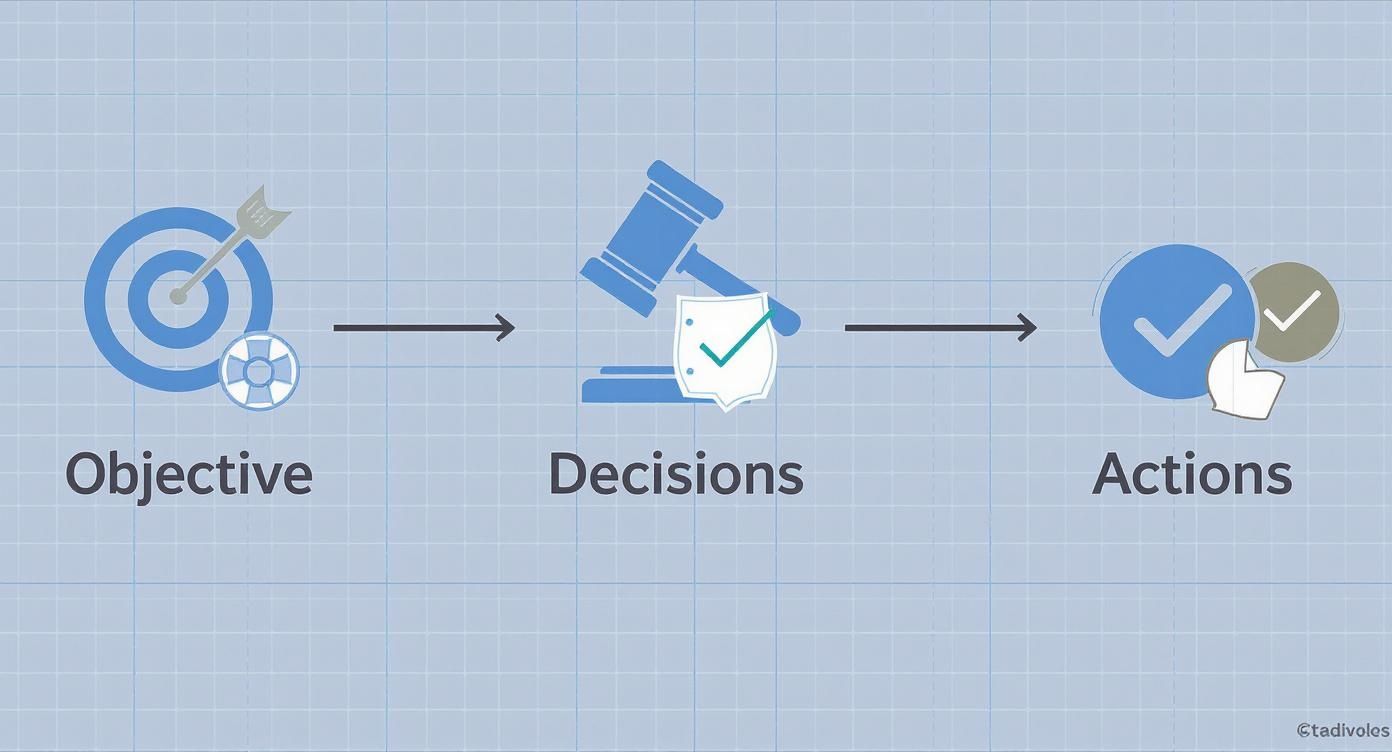
As you can see, the process of setting an objective and logging decisions naturally funnels down to assigning tasks that people can actually execute.
Real-World Examples from Different Teams
Let's put this into practice with a few scenarios you've probably seen before. The principle works whether you're in marketing, operations, or engineering.
- For a Marketing Team: Don't just write "Plan social media campaign." Instead, make it actionable: "Liam to draft the social media content calendar for the November product launch and share it in the #marketing channel by EOD Wednesday."
- For an Operations Team: "Investigate shipping delays" is too broad. Try this: "Maria to analyze the shipping logs from the past two weeks and present key findings at the next stand-up on Monday."
- For a Development Team: "Fix login bug" is a classic. Get specific: "David to resolve ticket #5821 (login page CSS error on mobile) and deploy the fix to the staging server by Thursday."
Here’s a pro tip: confirm ownership during the meeting, before you move on to the next topic. A quick, "So, David, you've got ticket #5821 with a deadline of Thursday?" solidifies the commitment and clears up any potential confusion right then and there.
Adopting this format makes tracking progress a breeze and keeps everyone accountable. It also makes life much easier for anyone using one of the best note-taking apps to quickly capture and delegate follow-up tasks.
A Practical Sample of Meeting Minutes With Action Items

Sometimes, the best way to get a feel for something is to see it in action. Let's walk through a real-world meeting minutes with action items sample from a project kickoff. This isn't just some generic template; it’s a practical example you can easily tweak for your own meetings.
Pay attention to how it’s built for clarity. The key info is easy to spot, the decisions are crystal clear, and the action items are front and center. I’ve also added some notes in italics to explain the thinking behind each section.
Meeting Title: Project Phoenix Kickoff
Date: October 26, 2024
Time: 10:00 AM - 10:45 AM
Attendees: Sarah (Project Lead), Liam (Marketing), Maria (Operations), David (Development)
Minute Taker: Sarah
Meeting Objective
This section cuts right to the chase. It sets the stage immediately, so anyone reading—whether they were there or not—understands the purpose of the meeting without having to sift through the details.
To align on the core goals, timeline, and initial responsibilities for the Project Phoenix launch, scheduled for Q1 2025.
Key Decisions Made
This isn’t a play-by-play of the conversation. It's a clean, straightforward summary of what was actually decided. This becomes the single source of truth and helps prevent those "I thought we agreed to..." conversations down the line.
- Launch Date Confirmed: The official go-live date is locked in for February 15, 2025.
- Marketing Channel Focus: The main push will be through email campaigns and targeted social media ads. Partner webinars will be a secondary focus.
- Reporting Cadence: The project team will hold a 30-minute status update every Tuesday at 10 AM.
The real value here is scannability. A busy exec or a team member who missed the meeting can absorb the critical outcomes in less than 30 seconds. That's how you keep a project moving.
Action Items
Here’s the heart of the document. Notice every task has a clear owner, a specific verb, and a hard deadline. Ambiguity is the enemy of progress, and this format eliminates it.
This sample gives you a solid, repeatable framework. Feel free to copy this structure directly into your own document or favorite note-taking app. You’ll immediately see an improvement in the clarity and impact of your meeting notes.
Smarter Ways to Capture and Track Minutes
Let's be honest: trying to capture every decision and action item while also actively participating in a meeting is a recipe for failure. You're either a great contributor or a great note-taker, but rarely both at the same time. This is where your tools should step in to make your job easier, not add another layer of complexity.
Modern software can completely change how you create and manage meeting minutes, saving you a ton of time and seriously boosting accuracy. The biggest game-changer? AI-powered tools that transcribe conversations as they happen. We're way past simple dictation here; many platforms can now automatically spot key decisions, summarize entire discussions, and even flag potential action items based on what was said.
This frees you up to actually think and engage during the meeting, instead of just furiously typing to keep up.
This isn't just a fancy trick for huge corporations, either. Teams of all sizes are adopting meeting intelligence software to handle their follow-ups. In fact, smaller organizations are often quicker to jump on this tech, using it to capture notes and automatically pinpoint what needs to be done next.
Choosing the Right Tools for Your Team
The great thing is, you might already have access to these features. Many of the platforms you use every day, like Microsoft Teams and Zoom, now have built-in AI summaries and highlight reels that pull out the most important moments from a recorded meeting.
For those looking to take it a step further, there are plenty of specialized digital tools for meeting notes designed to automate even more of the process.
The goal isn't just to get a transcript; it's to get a head start on your follow-up. A good tool should deliver a summary and a list of potential action items within minutes of the meeting ending, cutting down your administrative work significantly.
Many of these tools also plug right into your project management software. Imagine an action item from your meeting being sent directly to an Asana or Trello board without you lifting a finger. That's the kind of seamless workflow that turns conversations into completed tasks.
The engine driving all of this is advanced speech-to-text AI, which has become incredibly precise over the last few years. If you're curious about the mechanics, you can learn more about how this technology works in our detailed guide. At the end of the day, the right tool helps you build a rock-solid system for accountability, minus the headache.
Navigating the Tricky Parts of Taking Minutes
Even with a solid template in hand, you’ll inevitably run into some gray areas when you're the one tasked with taking notes. Let's walk through a few common hurdles I've seen trip people up and how to handle them like a pro.
One of the biggest questions I get is, "How detailed do I need to be?" It’s a classic balancing act. You're not a court reporter creating a word-for-word transcript, but your notes need enough substance to be useful later on.
My go-to advice? Always capture the "why" behind any decision. Briefly jot down the main options that were on the table and the single biggest reason the group landed on its final choice. This simple step can save you from having the exact same debate three weeks from now.
Another common scenario is the dreaded conversational detour. What do you do when the discussion veers completely off-topic?
How to Handle Tangents and Disagreements
It's easy to just ignore those off-the-cuff remarks to keep the minutes looking tidy, but you risk losing a golden nugget of an idea. Instead of letting tangents hijack the meeting, I recommend creating a "Parking Lot" section in your notes.
This is a brilliant little trick that does two things at once:
- It validates the person's contribution without derailing the agenda.
- It ensures the idea is captured and can be officially added to a future agenda, so it doesn't just vanish.
So, what about disagreements? Don't pretend they didn't happen. If the team is genuinely split, it's actually helpful to document the different perspectives. Something as simple as, "Marketing advocated for Option A, citing brand consistency, while Finance cautioned against its impact on the quarterly budget," gives a much clearer picture to anyone who wasn't in the room.
Tired of furiously typing to keep up? Imagine getting perfect meeting summaries without lifting a finger. Whisper AI automatically transcribes your calls and pulls out all the key decisions, highlights, and action items for you. Try Whisper AI today and see how much time you can get back.
